Bobcat Economic Value Study
Summary of Study
During the winter of 2016, a bobcat was frequently seen near the Madison River in Yellowstone. This single bobcat brought in tourists, photographers, and wildlife watchers from nationwide which resulted in an economic benefit to the local economy around Yellowstone National Park. In collaboration with Panthera, a cat research and conservation organization, our study aimed to quantify this value of one bobcat which was enjoyed by so many and is alive and well today to continue to bring visitors to see this fascinating species. In Wyoming, bobcats can be trapped in unlimited numbers from November 15 to March 1 of each year. Bobcats that are sold overseas or are exported out of the state must be tagged by the Wyoming Game and Fish Department (WGFD) as required by the Convention on International Trade in Endangered Species (CITES) which aims to reduce or eliminate the number of illegal endangered species being bought and sold worldwide. This registration of bobcats is the only method the WGFD uses to monitor bobcat populations in the state. For a single $44 license, a trapper can trap as many bobcats as possible and then sell the pelts for personal profit. We propose that this species is worth much more alive than dead and should be managed with quotas and limits.
Recent News Articles
Press Release


For Immediate Release
July 9, 2017
Valuing Bobcats:
Scientists find Bobcats worth 1,000 times more Alive than Dead
Media contacts:
Panthera – Susie W. Sheppard (347) 446-9904; sweller@panthera.org
Wyoming Untrapped – Lisa Robertson, (307) 201-2422; lisarob22@gmail.com
Jackson, Wyoming – Authors of a new article in Biodiversity and Conservation, an internationally-recognized science journal, calculated the value of a free-roaming bobcat in Yellowstone National Park to the economy versus its value as a trapped and hunted animal. The article is a unique collaboration between researchers from Panthera, the global wild cat conservation organization, and advocates with Wyoming Untrapped.
The authors estimated a conservative, non-consumptive economic value of $308,105 for this single bobcat in Yellowstone National Park in northwest Wyoming for one winter season, a figure nearly 1000 times greater than the average exploitative value of $315.17 per bobcat trapped or hunted in Wyoming that same year ($130.53 per bobcat harvested in revenue earned by the state of Wyoming in trapping license sales + $184.64 per pelt sold by successful trappers and hunters). Also consider, that this same bobcat could generate the same figure again the following year, should it survive the summer season in Yellowstone. Over its life, this one bobcat could generate well over $1 million in economic activity, shared across countless people involved in travel and tourism.
Dr. Mark Elbroch, Puma Program Lead Scientist and lead author, stated, “With millions of people coming through Yellowstone and Grand Teton each year, the value of living wildlife to local economies, visitor enjoyment, and even to those who may never visit these parks, cannot be emphasized enough. Bobcats are a natural resource we share in public trust with the whole country, and beyond.”
At a time when the North American model of wildlife conservation works to eliminate markets that support the exploitation of wildlife, this study underscores a movement to manage animals for the second largest economy in the state – tourism. Bobcats, however, continue to be hunted and trapped for pelts that are sent to overseas markets for use in clothing. In Wyoming, a resident bobcat license currently costs $44.
The authors conclude with recommendations that we enact range-wide regulatory changes across the United States, Canada and Mexico to ensure bobcat management is science-based, and that hunting/trapping limits are created and enforced that ensure bobcats are abundant enough across their range to support ecotourism and ecological stability, as well as sportsmen; in this way we increase protection for this amazing, beautiful animal, as well as ensure all people have access to shared resources held in trust. Right now, bobcat management is variable. For example, Texas currently offers zero protection to bobcats, whereas in California and New Hampshire, they are fully protected and illegal to hunt.
About Panthera
Panthera, founded in 2006, is devoted exclusively to preserving wild cats and their critical role in the world’s ecosystems. Panthera’s team of leading biologists, law enforcement experts and wild cat advocates develop innovative strategies based on the best available science to protect cheetahs, jaguars, leopards, lions, pumas, snow leopards and tigers and their vast landscapes. In 36 countries around the world, Panthera works with a wide variety of stakeholders to reduce or eliminate the most pressing threats to wild cats—securing their future, and ours.
Visit Panthera.org.
About Wyoming Untrapped
Wyoming Untrapped is dedicated to creating a safe and humane environment for people, pets and wildlife through education, trapping regulation reform, and compassionate coexistence.
Visit WyomingUntrapped.org.
Article full text can be found at http://rdcu.be/tW06
PDF of press release: What’s the Value of a Single Bobcat Press Release
We thank the Scully family for financial support of this project.
Abstract
Ecotourism enhances conservation management, promotes non-consumptive use of wildlife, and increases local community resources over that of select individuals when compared with consumptive uses such as hunting or trapping. The bobcat is a cryptic mesocarnivore widely exploited for pelts across North America, and a species increasingly contributing to ecotourism. Here, we report a conservative, non-consumptive economic value of $308,105 for a single bobcat in Yellowstone National Park in northwest Wyoming for the 2015-2016 winter season, a figure nearly 1000 times greater than exploitative values of $315.17 per bobcat trapped or hunted in Wyoming in the same season ($130.53 per bobcat harvested in revenue earned by the state of Wyoming in trapping license sales + $184.64 per pelt sold by successful trappers and hunters). In 2016, tourism was the second largest industry in Wyoming and generated $3.2 billion. Our case study emphasizes that current bobcat regulatory policies across North America do not reflect current cultural values, inclusive of both consumptive and non-consumptive use of wildlife. Therefore, we recommend range-wide regulatory changes to ensure bobcat management is not just sustainable in terms of harvest, but that all people have access to shared resources held in trust.
Trapping/hunting regulations across states and provinces; bobcat range in inset.
The color scheme is cumulative: green is full protection; yellow is legal hunting/trapping but with mandatory checks and bag limits; orange removes bag limits; red removes bag limits and mandatory checks; black is no monitoring or protection at all. (Elbroch et al. 2017. Biodiversity and Conservation)
Trapping data from Wyoming from 2007 to 2016 (Sheridan et al. 2016)
Note that as pelt prices soared (blue), cumulative licenses sold (trapping is during winter and straddles two years, requiring two separate licenses) followed in red, even while bobcat harvest declined in green, perhaps reflective of the availability of bobcats on the landscape. (Elbroch et al. 2017. Biodiversity and Conservation)
Photography
These stunning photographs were captured by the many photographers who traveled to Wyoming to see the Madison River bobcat. These generous photographers have offered these images to Wyoming Untrapped to advocate for wildlife’s right to exist without persecution. Please visit their websites and support their artistry.
-
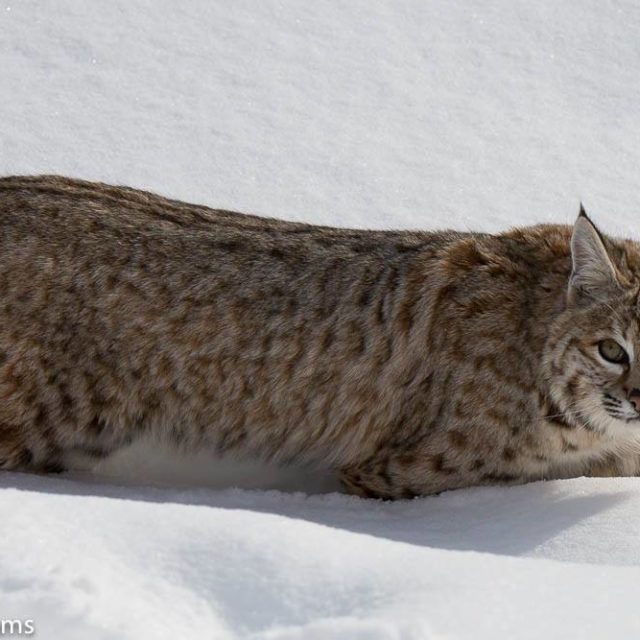
Jason Williams
Madison River Bobcat Photography
-
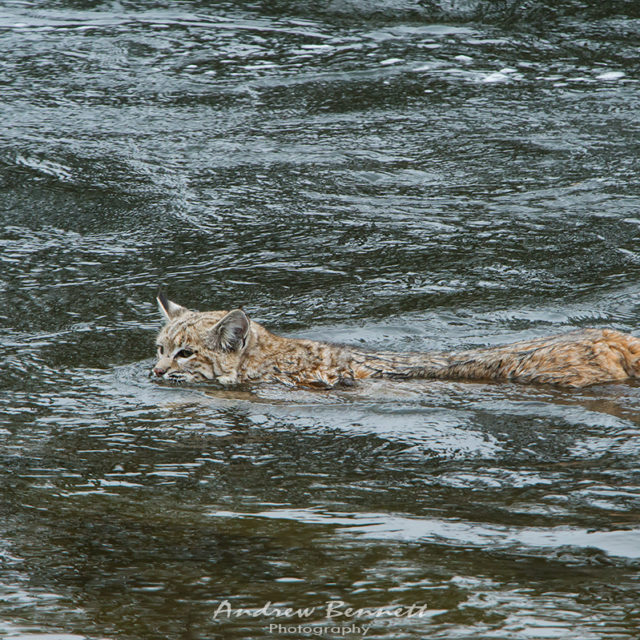
Andrew Bennett
Madison River Bobcat Photography
-
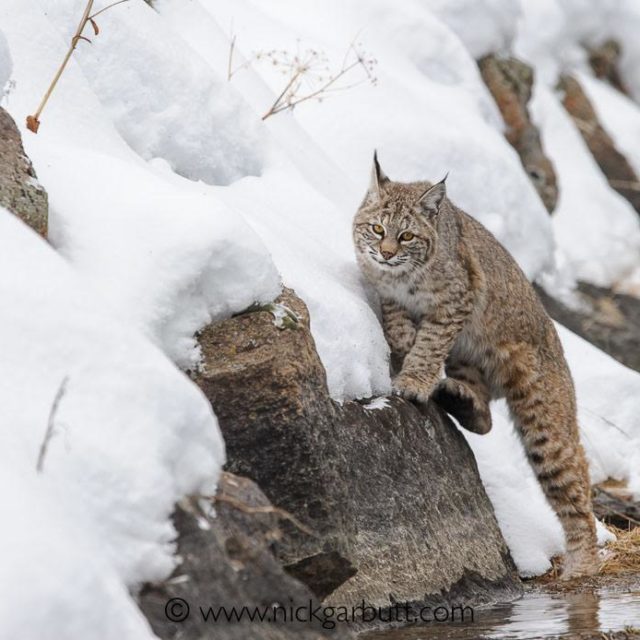
Nick Garbutt
Madison River Bobcat Photography
-
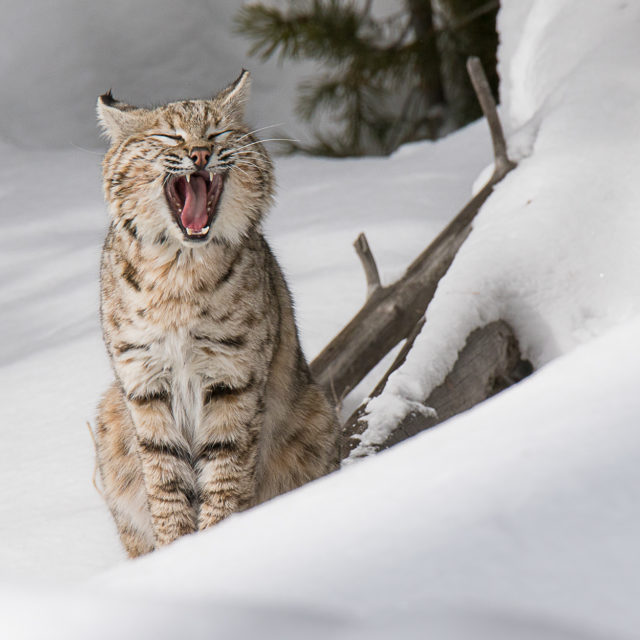
Carrie Wild
Madison River Bobcat Photography
-
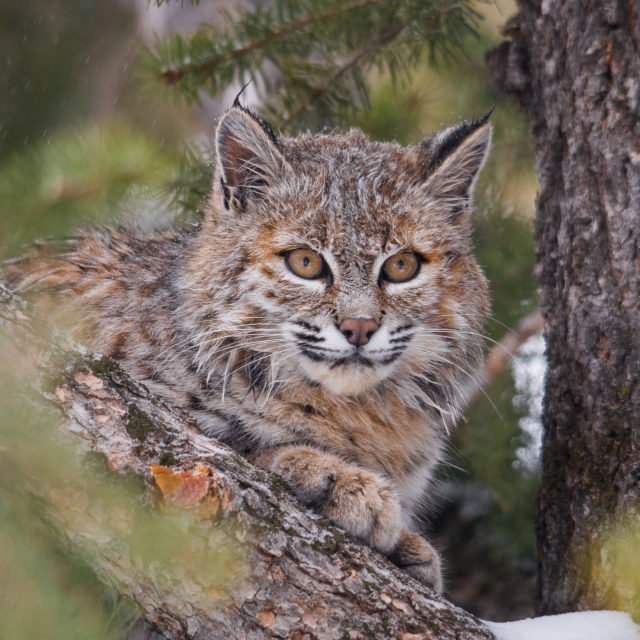
Sam Parks
Madison River Bobcat Photography
-
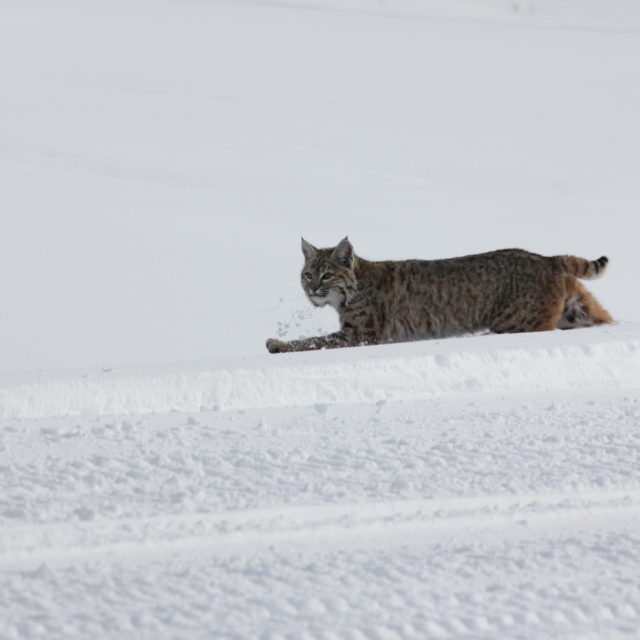
Lisa Robertson
Madison River Bobcat Photography




